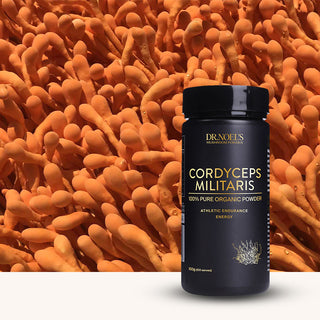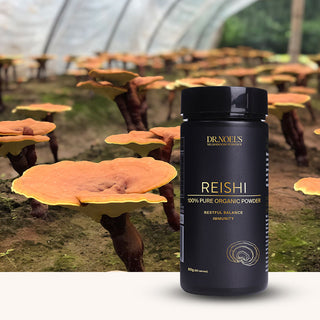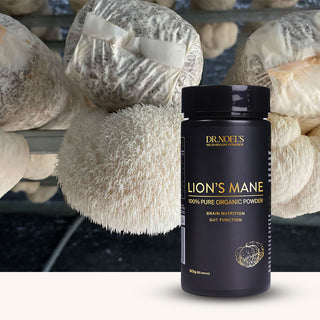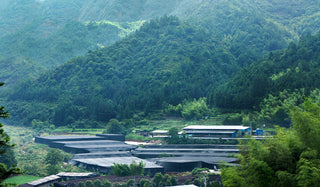The Journey of Medicinal Mushrooms: From Farm to Powder
Ever wondered how the mushroom powder in your morning smoothie or supplement capsule comes to life?
Behind every spoonful of Lion’s Mane or Reishi is a fascinating, hands-on journey—one that blends traditional cultivation with modern science. If you’re someone who values quality in what you consume, understanding this journey can help you make better decisions and appreciate the effort behind each dose.

Let’s walk through it step by step.
1. The Cultivation Begins
It all starts with the right strain. Not all mushrooms are created equal, and neither are their benefits. For medicinal mushrooms, the choice of strain, substrate, and growing conditions directly affect their active compounds.
Growers carefully select a substrate (the material the mushroom grows on) tailored to each species. For example, Lion’s Mane thrives on hardwood sawdust, while Reishi prefers logs or other organic mediums.
Environmental factors—like temperature, humidity, and light—are tightly controlled. But even in controlled environments, cultivation still requires patience. Some varieties take weeks to mature, while others like Reishi need months before they're ready to harvest.
2. Harvesting at Peak Potency
Timing is critical. The fruiting body (the part you see above the surface) is typically harvested once it’s fully developed, ensuring maximum beta-glucans and other beneficial compounds are present.
Some companies use both the fruiting body and mycelium (the underground network), but premium extracts almost always use 100% fruiting body. This is the part richest in active compounds like hericenones, erinacines, and triterpenes—depending on the species.
At Dr Noel’s, we strictly use the fruiting body, with no fillers or grain-based mycelium.
3. Drying and Preservation
Once harvested, mushrooms must be dried carefully to preserve their active compounds. Heat must be applied gently and gradually to avoid damaging delicate bioactives.
At this stage, poor handling can lead to mold growth, spoilage, or reduced potency. Top-tier producers use controlled dehydration or low-temperature ovens that protect the integrity of the compounds.
The end result is a clean, dry raw material, ready for extraction.
4. Extraction: Unlocking the Compounds

Here’s where the science really kicks in. Extraction turns dried mushrooms into potent, bioavailable powders your body can absorb.
Dr Noel’s uses a dual extraction process—combining both water and alcohol. Why both? Because certain compounds (like beta-glucans) dissolve in water, while others (like triterpenes and hericenones) require alcohol. A single extraction method just doesn’t cut it.
After extraction, the liquid is spray-dried into a fine powder—without the use of carriers like starch or maltodextrin.
This is why we call it concentrated powder: it’s up to 4–8x stronger than raw mushroom powder.
5. Testing and Quality Assurance
Before packaging, the powder undergoes lab testing. The two things we look for most:
-
Beta-glucan content (the active compound responsible for immune modulation)
-
Purity and contaminants (ensuring no heavy metals, pesticides, or fillers)
These tests are critical for anyone buying medicinal mushroom products. If a brand doesn’t show lab results or uses vague terms like “full-spectrum,” it’s worth questioning what’s inside.
6. Sourcing and Wholesale Supply
Finally, the mushroom powder is packaged and shipped to brands, clinics, or stores. Some buy it for personal use, others to resell under their own label.
For brands looking to start their own line, it’s important to work with a trusted mushroom powder wholesale supplier—someone who understands the full journey from farm to powder, and values quality at every step.
The Final Takeaway
When you scoop Lion’s Mane into your coffee or take a capsule of Reishi before bed, you’re consuming the result of months of meticulous work. From soil to shelf, each step influences the final product’s quality and potency.
At Dr Noel’s, we honour that journey. And we hope this gave you a clearer picture of what goes into every batch.
If you’ve got questions about sourcing, bioavailability, or how to find a high-quality mushroom powder, just reach out. We’re always happy to help.





